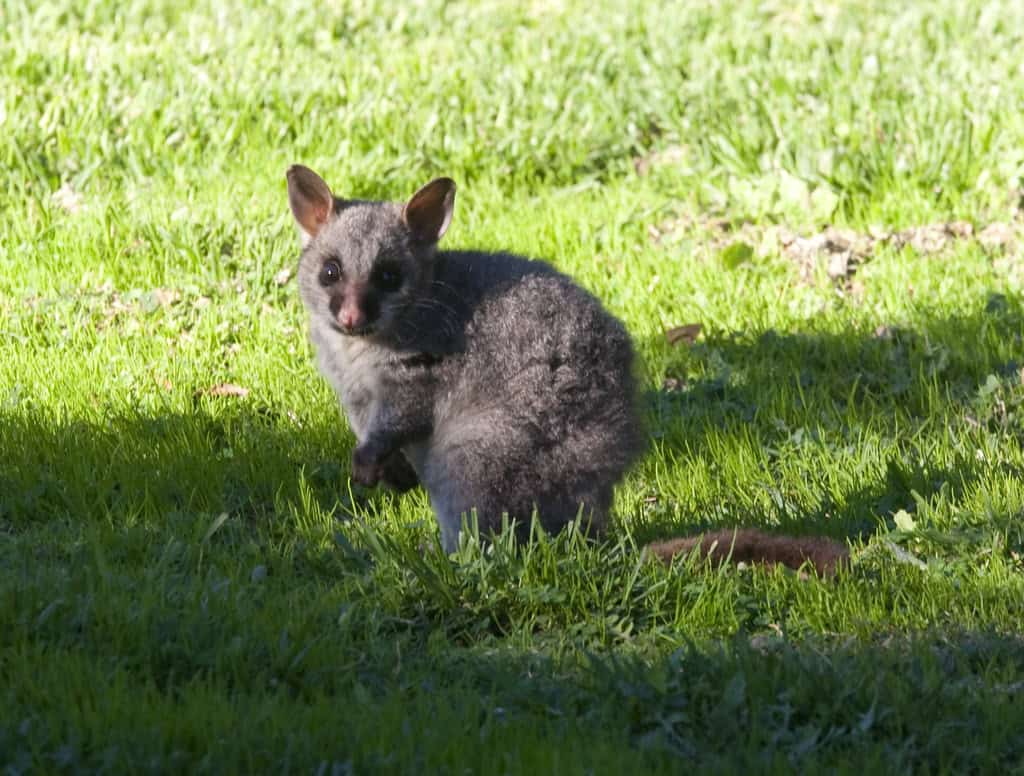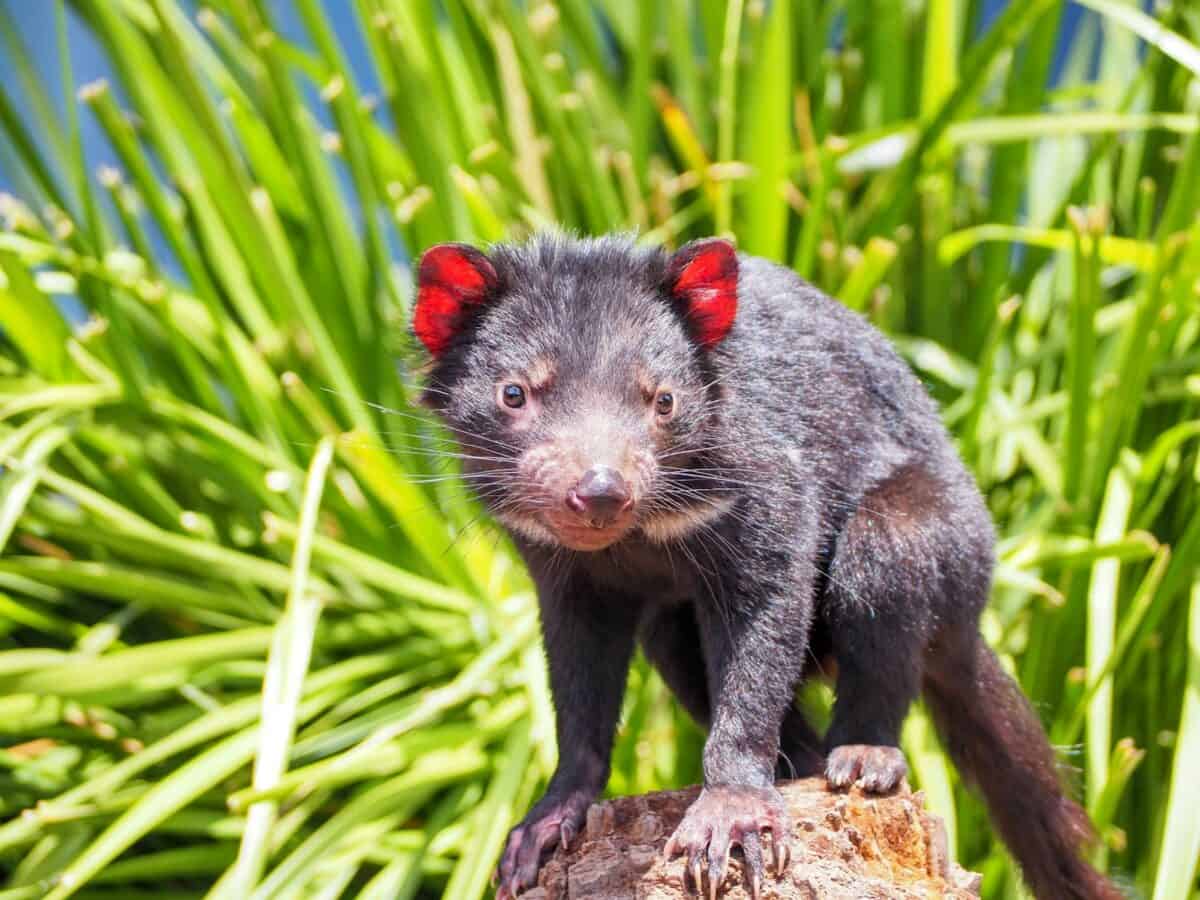Australia is like a living museum of extraordinary creatures that exist nowhere else on Earth. From tiny marsupials to massive reptiles, this island continent has evolved some of the most fascinating and unique animals you’ll ever encounter. Whether you’re planning a trip down under or just curious about the incredible wildlife that calls Australia home, prepare to be amazed by these remarkable creatures that have adapted to one of the world’s most diverse landscapes.
Quokka – The Happiest Animal on Earth

Meet the quokka, a small marsupial that looks like it’s permanently smiling and has become an internet sensation for its photogenic qualities. These adorable creatures, about the size of a house cat, live primarily on Rottnest Island near Perth and have no natural fear of humans. Their perpetually cheerful expression comes from their facial structure, making them appear to be grinning at all times. Quokkas are herbivores that munch on leaves, stems, and bark, and they’re surprisingly social animals that often gather in small groups. What makes them even more special is their curious nature – they’ll often approach visitors and seem to pose for selfies, earning them the nickname “the world’s happiest animal.”
Tasmanian Devil – The Fierce Little Fighter

Don’t let the Looney Tunes character fool you – the real Tasmanian devil is a fascinating carnivorous marsupial that’s much more complex than its cartoon counterpart. These stocky, black-furred animals are about the size of a small dog but pack the bite force of a much larger predator. Found only in Tasmania, they’re known for their bone-chilling screeches and aggressive feeding behavior when competing for food. Tasmanian devils are actually quite solitary and primarily scavenge for carrion, though they’ll hunt small animals when needed. Unfortunately, these remarkable creatures face extinction due to a contagious facial cancer, making every sighting in the wild incredibly precious.
Wombat – The Underground Engineer

Wombats are like nature’s bulldozers, built for digging extensive underground tunnel systems that can stretch for hundreds of meters. These chunky, barrel-shaped marsupials have backward-facing pouches to prevent dirt from getting in while they excavate their homes. What’s truly bizarre about wombats is their cube-shaped droppings – they’re the only animal in the world that produces square poop, which helps mark their territory without rolling away. Despite their stocky appearance, wombats can run up to 40 kilometers per hour when threatened and have been known to use their powerful rumps as weapons. Their burrows are so well-constructed that other animals often move in as tenants, creating underground apartment complexes in the Australian bush.
Echidna – The Spiky Egg-Layer

The echidna is one of only two mammals in the world that lay eggs, making it a living link to prehistoric times. Covered in sharp spines like a hedgehog but related to the platypus, echidnas are walking contradictions that have puzzled scientists for centuries. When threatened, they can dig straight down into the ground at remarkable speed, leaving only their spiky backs exposed like a natural pin cushion. These ant-eating specialists have incredibly long tongues that can extend up to 18 centimeters to slurp up their favorite meals. Baby echidnas, called puggles, hatch from leathery eggs and are among the most adorable creatures you’ll ever see, looking like tiny, spine-free versions of their parents.
Sugar Glider – The Flying Acrobat

Sugar gliders are like tiny flying squirrels that have perfected the art of gliding through Australia’s forests with remarkable precision. These palm-sized marsupials have a stretchy membrane of skin that extends from their wrists to their ankles, allowing them to glide up to 50 meters between trees. They’re incredibly social animals that live in colonies and communicate through a variety of chirps, clicks, and barks that sound almost like bird calls. What makes them even more endearing is their love of sweet tree sap and nectar, which gives them their name and provides the energy they need for their acrobatic lifestyle. At night, you might spot their large eyes reflecting light as they leap and glide through the canopy like tiny, furry fighter pilots.
Bilby – The Rabbit-Eared Digger

The bilby looks like someone mixed a rabbit, a mouse, and an anteater into one adorable package, complete with enormous ears and a long, pointed snout. These nocturnal marsupials are master diggers who create spiral-shaped burrows that can be up to 3 meters deep and 20 meters long. Their oversized ears aren’t just for show – they help regulate body temperature in the harsh Australian desert and can detect the slightest sounds of approaching predators. Bilbies have become somewhat of a cultural icon in Australia, often replacing the Easter Bunny in chocolate form to raise awareness about this endangered species. Unlike rabbits, bilbies don’t need to drink water regularly as they get most of their moisture from the insects, seeds, and bulbs they eat.
Frilled Lizard – The Dramatic Defender

The frilled lizard is nature’s master of dramatic theater, capable of transforming from a modest-looking reptile into a terrifying prehistoric monster in seconds. When threatened, this remarkable lizard unfurls a massive frill around its neck that can be up to four times the width of its body, while opening its bright yellow mouth and hissing loudly. If the intimidation display doesn’t work, frilled lizards will rear up on their hind legs and run away like tiny dinosaurs, a sight so comical it inspired countless memes and viral videos. These arboreal reptiles spend most of their time in trees, perfectly camouflaged against bark until they need to put on their dramatic show. Their frill isn’t just for defense – it also helps regulate their body temperature and plays a role in communication with other lizards.
Numbat – The Striped Termite Hunter

The numbat is like a living barcode with its distinctive white and dark stripes running across its rusty-red fur, making it one of Australia’s most visually striking small mammals. Unlike most marsupials, numbats are active during the day and have an incredibly specialized diet – they eat almost nothing but termites, consuming up to 20,000 of them daily. These solitary creatures have an amazingly long tongue that can extend half the length of their body to probe into termite galleries and logs. What makes numbats truly special is that they’re one of Australia’s rarest mammals, with fewer than 1,000 individuals left in the wild, making any encounter with them extraordinary. Their scientific name, Myrmecobius fasciatus, literally means “banded anteater,” though they’re not related to true anteaters at all.
Cassowary – The Dinosaur Bird

The cassowary is essentially a living dinosaur that stands nearly 2 meters tall and has earned the reputation as the world’s most dangerous bird. With its brilliant blue and black feathers, distinctive casque (helmet-like structure) on its head, and razor-sharp claws that can grow up to 12 centimeters long, this flightless bird commands respect in Australia’s rainforests. Cassowaries play a crucial role as “keystone species” by dispersing seeds from over 200 different rainforest plants through their droppings, earning them the nickname “rainforest gardeners.” Despite their fearsome appearance, cassowaries are generally shy and will only attack if they feel cornered or are protecting their young. Their deep, booming calls can be heard from over a kilometer away and are so low-pitched that they’re partially below human hearing range.
Platypus – The Impossible Animal

When European scientists first encountered the platypus, they thought it was a hoax – someone had sewn a duck’s bill onto a beaver’s body as an elaborate joke. This egg-laying mammal defies so many biological rules that it seems like nature was experimenting when it created this extraordinary creature. Male platypuses have venomous spurs on their hind legs that can deliver excruciating pain lasting for weeks, making them one of the few venomous mammals on Earth. They hunt underwater with their eyes and ears closed, using electroreception through their bills to detect the electrical fields generated by other animals’ muscle contractions. Perhaps most remarkably, platypuses don’t have nipples – instead, they secrete milk through pores in their skin, making them one of the most unique mothers in the animal kingdom.
Conclusion

Australia’s wildlife represents millions of years of isolated evolution, creating a natural wonderland that continues to surprise and delight visitors from around the world. From the internet-famous quokka’s perpetual smile to the platypus’s impossible biology, these ten amazing animals showcase the incredible diversity and uniqueness of Australian fauna. Each creature has adapted to thrive in Australia’s varied landscapes, from dense rainforests to arid deserts, developing characteristics found nowhere else on Earth. Whether you encounter them in the wild, at wildlife sanctuaries, or zoos, these animals offer a glimpse into the remarkable creativity of evolution. What fascinates you most about these incredible Australian creatures?
- 10 Animals That Use Camouflage Best - August 17, 2025
- 13 Wild Birds That Use Tools to Hunt - August 17, 2025
- 9 Smartest Animal Species in North America—And Why They’re So Clever - August 17, 2025

